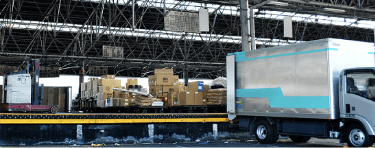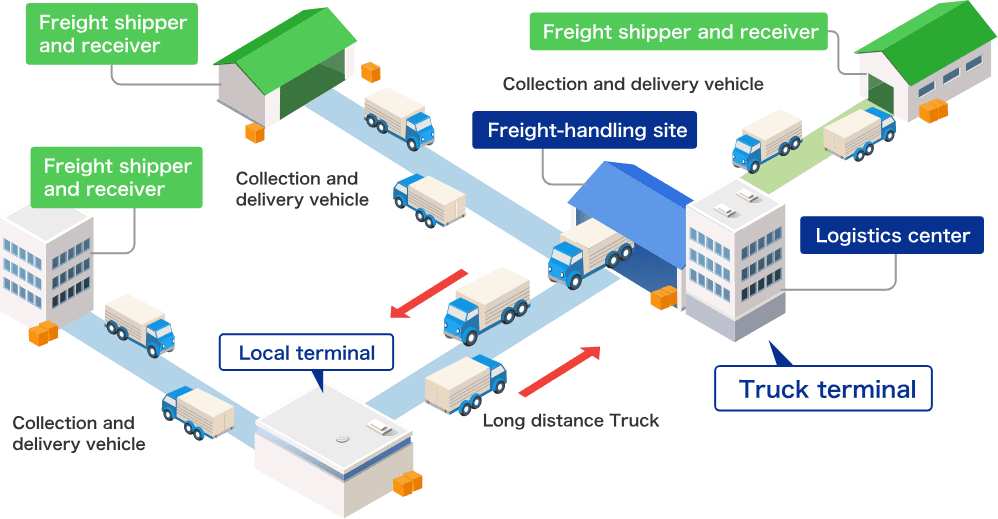Functions and Benefits of Truck Terminals


Japan Motor Terminal Co., Ltd. manages four Public truck Terminals in
the outer
circumference areas of Tokyo. Public Truck Terminal has many functions; base of transportation between
cities, base
of freight collection and delivery inside Tokyo, transit base for the entire nation, and easing of
traffic
congestion and redevelopment of cities.
In recent years, physical distribution in Japan has been significantly changing, such as just-in-time
and
more-frequent, smaller-amount delivery, and the growth of consumer distribution represented by
door-to-door courier
delivery service. We will respond to the expectations by tackling new projects that meet such changes
in physical
distribution, while remaining centered on truck terminal operations, which are of a highly public
nature, and
through enrichment of high-standard service.
Base of Transportation between Cities
Truck terminals play an active role day and night, as a base for large-volume truck transportation between cities. The amount of freight flowing in and out is the largest between Tokyo and the Hanshin district, and freight from the entire nation ― from Hokkaido in the north to Kyushu in the south ― is gathered at terminals, and freight collected inside Tokyo is organized as units and transported on a mass scale to various places throughout Japan.
Base of Freight Collection and Delivery inside Tokyo
Freight transported in large amounts by large-size trucks and trailers from various places in Japan is assorted at truck terminals and promptly delivered to various places in Tokyo. The majority of this freight is living consumption goods that are directly connected to people’s everyday living such as clothes, books, household electric appliances, pharmaceuticals, and food products.
Transit Base for the Entire Nation
A truck terminal is a meeting place of a network of routes from various places in Japan; as such, freight that moves through Tokyo from one local area to another is transited inside the terminal premises. Thus, truck terminals contribute to rationalization of truck transportation and easing of traffic congestion in cities.
Easing of Traffic Congestion and Redevelopment of Cities
Truck terminals ease traffic congestion by reducing overlapping, mixed, and multi-transfer transportation in cities, through integration and relocation of small-scale terminals that are established haphazardly in city center areas. They also greatly contribute to redevelopment of city center areas, such as converting the usage of and abolition of existing small-scale logistics facilities, and more effective usage of vacated land.


Logistics Center
The Logistics Center is a facility developed in accordance with the Law
Concerning the
Development of Built-up Areas for Logistics Business. With the purpose of facilitating more
efficient road traffic
and the enhancement of the logistics function, the purpose of this project is to move the
logistics facilities such
as wholesale stores, warehouses, truck terminals, etc., located in the center of the city
to
new locations on the
boundary edges of the ward area, where access can be obtained readily to the node of the
Metropolitan Expressways
and major loop roads. All the related facilities are to be integrally located in the
specified
district to form an
efficient logistics center.
The Metropolitan Government was, according to the “Basic Policy on the Improvement of
Logistics
Facilities in Tokyo
Metropolis”, as devised in December 1966, to consolidate logistics centers in 5 districts
of
the south, northwest,
north, east and southwest.
The four centers of the south, northwest, north and east are already completed and have
begun
functioning. The
Southwest Center is under study.